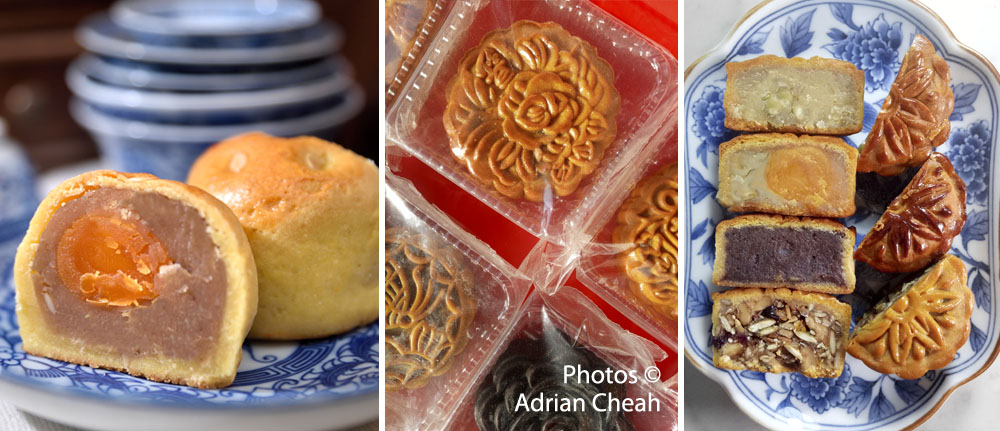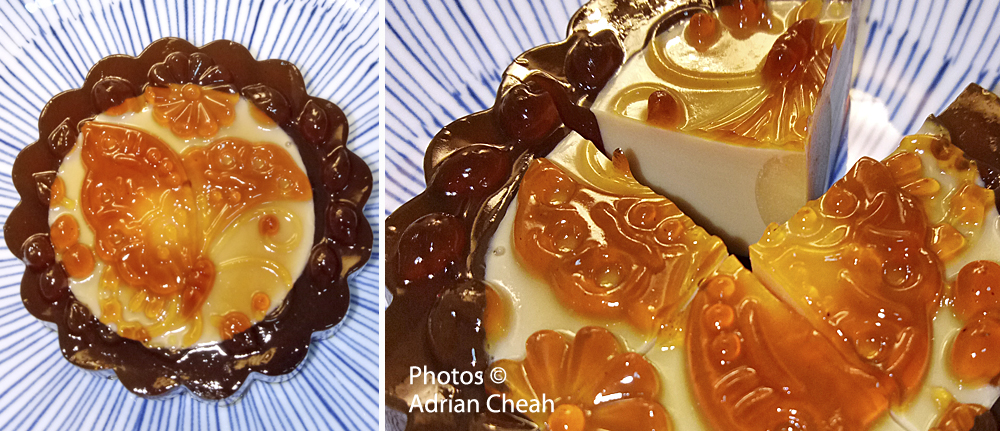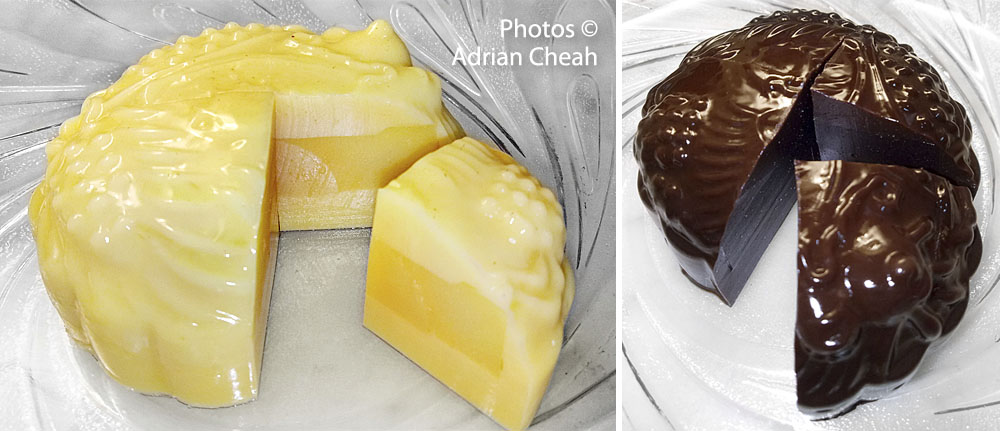Memories of Auntie Jo's delightful jelly mooncakes

The story of the mooncake stretches far back into the mists of antiquity. As early as the Shang Dynasty (c. 1600–1046 BC) and the Zhou Dynasty (1046–256 BC), their predecessor, the taishi cake, was already present. Over centuries, mooncakes evolved into a symbolic offering for the Mid-Autumn Festival, a tradition that continues to this very day. Though the classic baked mooncake has endured for thousands of years, the art of mooncake-making has never stood still. It has adapted, innovated and reimagined itself in step with the times.


Among the timeless varieties are Cantonese mooncakes (golden-brown skin encasing a sweet filling), Shanghai mooncakes (crisp and crumbly shortcrust pastry skin encasing a sweet filling), Suzhou mooncakes (a crisp, flaky crust with a pork filling) and Teochew mooncakes (also known as “thousand-layer mooncakes", these mille-feuille marvels are filled with taro paste or other sweet delights). These are only a few of the many forms that grace the table during the mooncake festival.

Traditional mooncake fillings often feature the classics such as red bean, silky white lotus seed paste, or earthy taro, together with the hearty savoury mix of assorted nuts. In more recent times, culinary creativity has transformed the mooncake into a canvas of flavours both daring and delightful. Modern interpretations span from the delicate and familiar, including matcha, pandan and coconut, to indulgent innovations such as dark chocolate, milk chocolate ganache, tiramisu, rum and raisin, brandy, salted caramel, cheese, Pu Er and Jasmine teas. Tropical fruits have also found their way into the mix, among them durian, mango, jackfruit, cempedak, dragon fruit, pink guava, passionfruit, raspberry, blueberry and lychee. Some artisans have even ventured into the realm of luxury, infusing mooncakes with the extravagance of truffles and the rarity of bird’s nest.
Modernity has brought yet more wonders: ice cream mooncakes from Haagen-Dazs, jewel-like snow skin mooncakes, intricate 3D rose-shaped creations, chewy mochi mooncakes, even mooncakes layered with crepes. And then, there are jelly mooncakes, translucent or opaque, both colourful and enchanting.

Jelly mooncakes are edible works of art, demanding patience, precision and imagination. Auntie Josephine, my mother’s sister-in-law, a woman of boundless culinary gifts is one of the earliest (I came across) to embrace this delicate craft. Known affectionately as Auntie Jo, she has an extraordinary skill for mastering new recipes, adding them effortlessly to her already dazzling repertoire of cakes, pies, cookies and savoury dishes.


In 2005, she attended a cooking class to learn the then-novel art of making jelly mooncakes. At that time, they were still a curiosity, scarcely found in shops and rarely made at home. True to form, Auntie Jo perfected the method with ease, then began experimenting with flavours. Her creations—red bean, lotus, taro, chocolate and corn—echoed the beloved flavours reimagined in a delicate, shimmering jelly form. Her devotion to quality was absolute. She boiled, ground and prepared the ingredients herself, ensuring that every bite bore her signature care. The result was nothing short of truly delightful treats. They were as beautiful to behold as they were to taste.
To savour one of Auntie Jo’s jelly mooncakes was to taste more than a festival treat; it was to experience her artistry, her generosity, and the love she poured into every creation. Despite the labour-intensive process, Auntie Jo kept her prices reasonable, and over the years her circle of loyal supporters grew steadily.

In 2017, I received a box of Auntie Jo’s jelly mooncakes, lovingly sent from Kuala Lumpur to Penang. I was overjoyed by the sight of those delicate beauties, each one so exquisite that they seemed almost too pretty to cut into. After photographing them, I finally allowed myself the pleasure of tasting, and every mouthful was pure delight, made all the more meaningful knowing they had been crafted with love.
Two years later, in 2019, Auntie Jo decided to stop making her jelly mooncakes. Though saddened by the news, I remain grateful that I had captured her creations through my lens, preserving these edible masterpieces for posterity.
Since then, I have sampled many commercially produced jelly mooncakes, yet none come close to hers. Too often they are cloyingly sweet, or leave a powdery, flour-like aftertaste. Some arrive in colours so garish they seem almost radioactive, while others are drenched in artificial essence, thin in flavour, and lacking in soul. Compared to Auntie Jo’s, most are, quite simply, disappointing.

My mum and Auntie Jo taught me that in cooking, the most priceless ingredients are love and good intentions, for they are what transform a dish into a lasting memory. Auntie Jo’s jelly mooncakes were more than festive treats; they were expressions of her heart, and they have left an indelible mark on mine.

Auntie Jo with daughter, Michelle and son, Lawrence (left), and with me (right).
-------------------------------------
Written and photographed by Adrian Cheah
© All rights reserved
Updated 10 September 2021